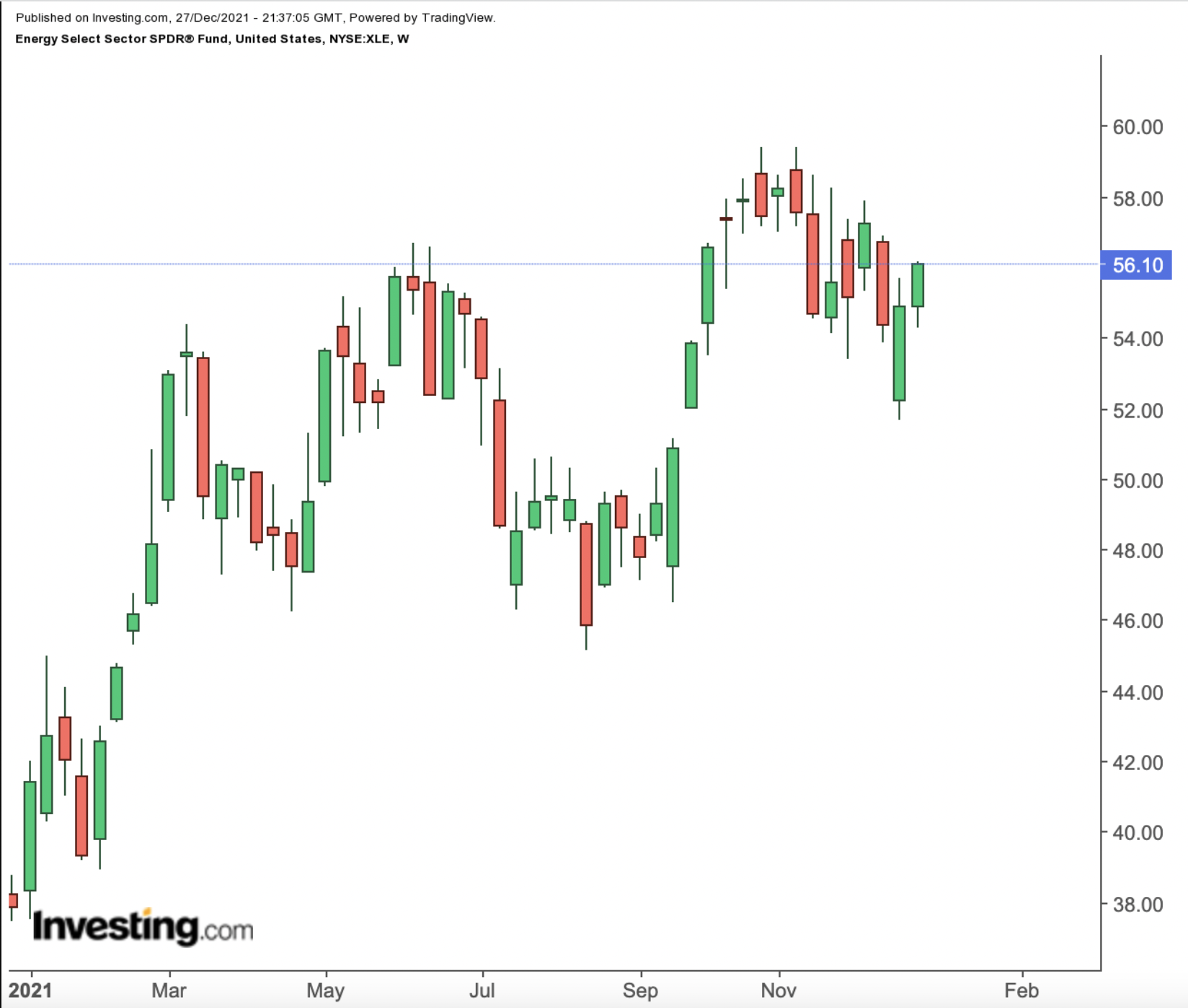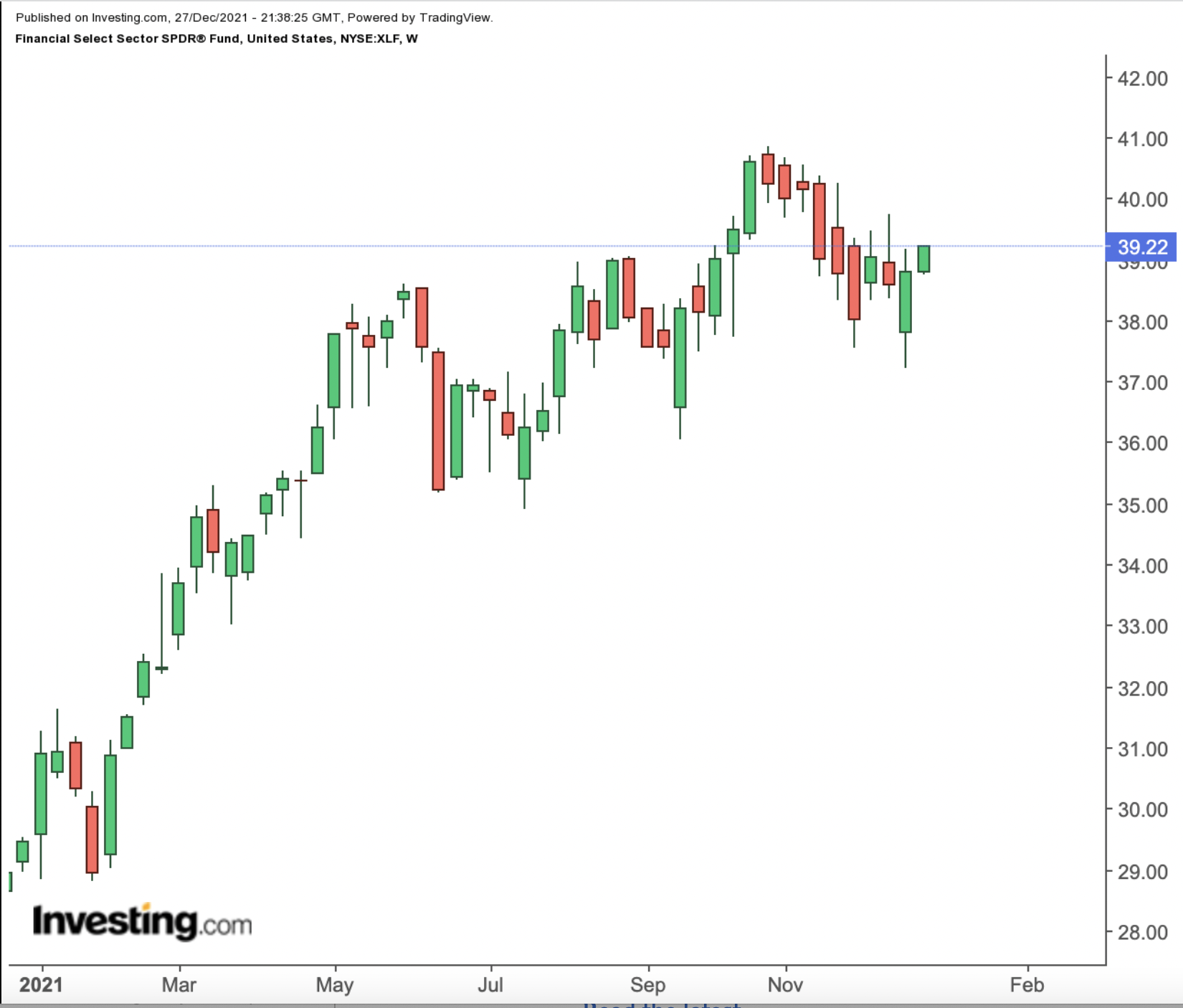60%+ returns in 2025: Here’s how AI-powered stock investing has changed the game
Investing in any of the 11 sectors of the S&P 500 index could help anyone diversify their portfolio. Yesterday, we discussed using exchange traded funds (ETFs) to gain a stake in three SPX sectors: Communication Services, Consumer Staples, as well as Consumer Discretionary. Today, we look at funds that provide access to the Energy, Financials, and Healthcare sectors.
1. Energy
The Energy Select Sector SPDR® Fund (NYSE:XLE) invests in oil and gas businesses as well as firms that operate within energy equipment and services industries.

XLE has 21 holdings and follows the Energy Select Sector Index. The fund was launched in December 1998. It currently has more than $25.6 billion under management.
Oil majors Exxon Mobil (NYSE:XOM) and Chevron (NYSE:CVX) comprise almost 45% of the ETF. This means large swings in shares of these two names affect XLE significantly. Among other leading top holdings are EOG Resources (NYSE:EOG), ConocoPhillips (NYSE:COP), Schlumberger (NYSE:SLB), Pioneer Natural Resources (NYSE:PXD) and Phillips 66 (NYSE:PSX).
In October, oil prices hit multi-year highs, providing tailwinds to many names in the fund. However, since then, Omicron headlines have put pressure on the sector.
Nonetheless, XLE, which also saw a multi-year high, is still up more than 44.5% in 2021. In addition, the current price of $56.10 as of Monday's close supports a dividend yield of 5.11%. Trailing P/E and P/B ratios are 14.18x and 1.85x, respectively. Although news about COVID-19 variants could mean further choppiness in price, long-term investors could consider investing around these levels.
Two other attractive ETFs to research in this sector are the Vanguard Energy Index Fund ETF Shares (NYSE:VDE) and the Fidelity® MSCI Energy Index ETF (NYSE:FENY).
2. Financials
In 2022, Wall Street anticipates two or even three rate hikes from the Federal Reserve. This expectation has put the financial sector on investors' radar as these companies typically benefit from higher profit margins as rates rise, leading to robust share price returns.
The Financial Select Sector SPDR® Fund (NYSE:XLF) gives exposure to a diverse group of financial services firms, such as banks, insurers, real estate investment trusts (REITs), asset managers, and brokers.

XLF, which tracks the returns of the Financial Select Sector Index, has 67 holdings. It started trading in December 1998, and net assets stand at $43.4 billion.
Among the top names on the roster are Berkshire Hathaway (NYSE:BRKa), JPMorgan Chase (NYSE:JPM), Wells Fargo (NYSE:WFC), Bank of America (NYSE:BAC), Morgan Stanley (NYSE:MS), Goldman Sachs (NYSE:GS), and BlackRock (NYSE:BLK). Around 55% of the fund is concentrated on the leading 10 stocks.
So far this year, the fund is up about 31.5% and saw an all-time high in late October. At Monday's closing price of $39.22, the ETF provides a dividend yield of 1.9%. Trailing P/E and P/B ratios are 13.47x and 1.67x. Despite robust returns in 2021, we're still bullish on many of the names in the fund.
Readers who expect the sector to benefit from potential interest rate hikes can also consider other ETFs, such as the Vanguard Financials Index Fund ETF Shares (NYSE:VFH) and the iShares U.S. Financials ETF (NYSE:IYF).
3. Healthcare
This year started with the positive news on several COVID vaccines that helped global economies return to normal. As a result, investors became interested in so-called “opening trades,” value shares that were out of favor because of pandemic triggered lockdowns. Healthcare stocks weren't necessarily part of that scenario. However, the increasing number of coronavirus cases due to the Omicron variant in recent weeks has once again put healthcare shares in the limelight.
The US healthcare industry is the world’s largest. The Health Care Select Sector SPDR® Fund (NYSE:XLV), one of the oldest ETFs in the segment, invests in biopharma and life sciences companies as well as firms that manufacture or distribute healthcare supplies and equipment. Since its inception in December 1998, the fund’s assets under management have grown to $35.4 billion.

XLV, which holds 64 stocks, tracks the returns of the Health Care Select Sector Index. In terms of sub-sectors, these include pharmaceuticals, which account for 27.89% of the fund, healthcare equipment and supplies (22.43%), healthcare providers and services (20.78%), life sciences tools and services (14.95%), and others.
Close to 55% of the fund's assets are concentrated in the top 10 names, including UnitedHealth (NYSE:UNH), Johnson & Johnson (NYSE:JNJ), Pfizer (NYSE:PFE), Thermo Fisher Scientific (NYSE:TMO), Abbott Laboratories (NYSE:ABT), AbbVie (NYSE:ABBV), and Merck (NYSE:MRK).
Since the start of the year, the ETF has returned more than 22.8% and hit a record high in recent days. Currently, its $140.77 price as of yesterday's close supports a dividend yield of 1.53%. Trailing P/E and P/B ratios stand at 18.30x and 5.30x. Given the recent run-up in price, interested readers might wait for a potential decline toward the $130 level.
In addition to XLV, investors may want to put the following two sector funds on their radar: the Vanguard Health Care Index Fund ETF Shares (NYSE:VHT) and the iShares Biotechnology ETF (NASDAQ:IBB).
